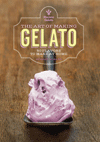Making Health Claims of Enrichment and Fortification
As nutrition continues to drive innovation, the ever-present question is simple: What claims can I make? There are many practical challenges from a product development/palatability standpoint in regards to developing new foods with added nutrients such as calcium, omega-3 fatty acids, fiber and chromium picolinate.

Editor's note: A version of this article originally appeared in Prepared Foods magazine.
As nutrition continues to drive innovation, the ever-present question is simple: What claims can I make? There are many practical challenges from a product development/palatability standpoint in regards to developing new foods with added nutrients such as calcium, omega-3 fatty acids, fiber and chromium picolinate. Although consumers want to improve the nutritional quality of their diet, at the same time, most are unwilling to compromise taste and value. Innovation is thus tied to communication. But incentives to innovate are stymied when marketers are significantly restrained from communicating the benefits of their innovations.
Since the roll-out of nutrition labeling rules by FDA in 1993, it has been understood that statements about the level of a nutrient ("nutrient content claim") or the health benefits associated with the level of a nutrient or food ("health claim") require regulatory approval.
In the name of innovation, there often are calls to "think outside the box." In the regulatory arena, such creativity all too often is constrained by the regulatory parameters. Food labeling regulations define the box, and when a claim puts the marketer decidedly outside the box, the negative consequences can be substantial.

Food ingredients generally fall into one of three legal categories: color additives, food additives and generally recognized as safe (GRAS) ingredients. Color and food additives are not permitted unless approved for use by FDA. Such approvals may be restricted to specified categories of foods, with specific limitations on the maximum allowed level that can be added. In other instances, FDA's food additive regulations are more flexible and allow use of a food additive at unspecified levels consistent with good manufacturing practices.
Exempt from the definition of a food additive are substances that are GRAS. GRAS status of an ingredient can be established by common use in foods or by scientific evidence that demonstrates the safety of an ingredient for an intended use. GRAS status can be affirmed by FDA or self-determined by an individual company. Regardless of the legal path, there must always be a legal basis for use of a nutrient in the food to which it is added. Unfortunately, the complex process in making such determinations and the regulatory processes involved are beyond the scope of this article.
Unlike the rules governing the legal use of ingredients, the notion of what constitutes "rational fortification" is not specified by regulation. Based on its general legal authority to prohibit false or misleading claims on a food label, the FDA developed a fortification policy that set the basis for policy and practice at both the FDA and USDA. The policy is widely recognized by the agency and most others as antiquated and in need of updating. Nevertheless, there are certainly underlying principles that remain valid, including whether the food and added nutrient are appropriate as a vehicle for encouraging consumption of the nutrient. It is prudent to carefully consider these underlying policies when determining if fortification of a food is appropriate.
The qualified health claim policy reflects the FDA's attempt to balance the courts' mandate for providing more, not less, information to consumers as contemplated under the First Amendment.
The fate of health claims made just a few years ago relating to the use of green tea and cancer prevention foreshadowed what has become a very gloomy picture for many new, fashionable nutrient/food components. The FDA responded to a green tea health claim petition after evaluating 223 published scientific studies, finding there was not "credible evidence" to support the claim for many of the cancers identified in the petition. In two instances, the agency concluded that a qualified health claim was appropriate with limitations that would sink any marketer's ship while still docked. The claim:
Two studies do not show that drinking green tea reduces the risk of breast cancer in women, but one weaker, more limited study suggests that drinking green tea may reduce this risk. Based on these studies, FDA concludes that it is highly unlikely that green tea reduces the risk of breast cancer.
The "highly unlikely" effect of green tea on cancer prevention is also highly unlikely to ever appear on a food label. Marketers may well have other ways to tout the general healthful properties of green tea/extract, but not by focusing on cancer.
Chromium picolinate and its purported effects on improving insulin resistance met a similar fate. The FDA found "very limited credible evidence" for the benefit, so the qualified health claim that can appear on labels must include the cautionary statement that the benefit "is highly uncertain."
The benefits of whole grains are undeniably a message that can be delivered in many different ways. Both USDA and FDA have issued guidance surrounding such claims as "100% whole grain" (allowed), whole grain and reduced risk of coronary heart disease and certain cancers (allowed if approved health claim is used), and "good source of whole grain" (USDA will not approve a label with this claim, viewed as unapproved nutrient content claim).
Health claims that reference the dietary impact on particular diseases are likely to continue to diminish in use as the latest wave of petitions have met with less than resounding success. Other nutrients, such as omega-3 fatty acids and ingredients like whole grains, provide just two examples of where marketers and their product development counterparts may focus their energies. Beyond health claims, there are many other avenues to explore for communicating useful nutrition and health information. So-called structure-function claims, MyPyramid-based claims and others suggest that the communication of innovation will find its way onto food labels.

An FDA-required qualifier, like that required for green tea, can take the punch out of a health claim.
Editor's note: A version of this article originally appeared in Prepared Foods magazine.
As nutrition continues to drive innovation, the ever-present question is simple: What claims can I make? There are many practical challenges from a product development/palatability standpoint in regards to developing new foods with added nutrients such as calcium, omega-3 fatty acids, fiber and chromium picolinate. Although consumers want to improve the nutritional quality of their diet, at the same time, most are unwilling to compromise taste and value. Innovation is thus tied to communication. But incentives to innovate are stymied when marketers are significantly restrained from communicating the benefits of their innovations.
Since the roll-out of nutrition labeling rules by FDA in 1993, it has been understood that statements about the level of a nutrient ("nutrient content claim") or the health benefits associated with the level of a nutrient or food ("health claim") require regulatory approval.
In the name of innovation, there often are calls to "think outside the box." In the regulatory arena, such creativity all too often is constrained by the regulatory parameters. Food labeling regulations define the box, and when a claim puts the marketer decidedly outside the box, the negative consequences can be substantial.

FDA allows some claims for omega-3s, but there are different criteria for the different types.
Rational fortification: Adding beneficial nutrients to conventional foods
Food labeling regulation encompasses two key concepts that determine whether one can add a given nutrient (or ingredient) to a food in order to achieve a desired health benefit. First, there must be a lawful basis for the addition of the nutrient or ingredient and, second, such an addition must constitute "rational fortification" as envisioned by the FDA and its counterpart at the U.S. Department of Agriculture's Food Safety and Inspection Service (FSIS).Food ingredients generally fall into one of three legal categories: color additives, food additives and generally recognized as safe (GRAS) ingredients. Color and food additives are not permitted unless approved for use by FDA. Such approvals may be restricted to specified categories of foods, with specific limitations on the maximum allowed level that can be added. In other instances, FDA's food additive regulations are more flexible and allow use of a food additive at unspecified levels consistent with good manufacturing practices.
Exempt from the definition of a food additive are substances that are GRAS. GRAS status of an ingredient can be established by common use in foods or by scientific evidence that demonstrates the safety of an ingredient for an intended use. GRAS status can be affirmed by FDA or self-determined by an individual company. Regardless of the legal path, there must always be a legal basis for use of a nutrient in the food to which it is added. Unfortunately, the complex process in making such determinations and the regulatory processes involved are beyond the scope of this article.
Unlike the rules governing the legal use of ingredients, the notion of what constitutes "rational fortification" is not specified by regulation. Based on its general legal authority to prohibit false or misleading claims on a food label, the FDA developed a fortification policy that set the basis for policy and practice at both the FDA and USDA. The policy is widely recognized by the agency and most others as antiquated and in need of updating. Nevertheless, there are certainly underlying principles that remain valid, including whether the food and added nutrient are appropriate as a vehicle for encouraging consumption of the nutrient. It is prudent to carefully consider these underlying policies when determining if fortification of a food is appropriate.
Added nutrients for health benefits: Qualified health claims on the decline
In response to court rulings and a desire by FDA to give consumers access to diet and health information, the agency developed a "qualified health claim" policy whereby the limitations of the underlying science must be disclosed to the consumer in the health claim. Prior to the emergence of this policy in 2003, the FDA had only approved unqualified health claims supported by the gold standard of "significant scientific agreement." While the developments were prompted by dietary supplement company initiatives, the process and types of claims have been considered by many as appropriate for qualifying food products as well.The qualified health claim policy reflects the FDA's attempt to balance the courts' mandate for providing more, not less, information to consumers as contemplated under the First Amendment.
The fate of health claims made just a few years ago relating to the use of green tea and cancer prevention foreshadowed what has become a very gloomy picture for many new, fashionable nutrient/food components. The FDA responded to a green tea health claim petition after evaluating 223 published scientific studies, finding there was not "credible evidence" to support the claim for many of the cancers identified in the petition. In two instances, the agency concluded that a qualified health claim was appropriate with limitations that would sink any marketer's ship while still docked. The claim:
Two studies do not show that drinking green tea reduces the risk of breast cancer in women, but one weaker, more limited study suggests that drinking green tea may reduce this risk. Based on these studies, FDA concludes that it is highly unlikely that green tea reduces the risk of breast cancer.
The "highly unlikely" effect of green tea on cancer prevention is also highly unlikely to ever appear on a food label. Marketers may well have other ways to tout the general healthful properties of green tea/extract, but not by focusing on cancer.
Chromium picolinate and its purported effects on improving insulin resistance met a similar fate. The FDA found "very limited credible evidence" for the benefit, so the qualified health claim that can appear on labels must include the cautionary statement that the benefit "is highly uncertain."
The glass is (at least) half-full
Touting the levels of omega-3 fatty acids is an area where FDA has moved to allow a number of related claims. These petitions are based on authoritative scientific statements of the federal government (so-called FDAMA claims as authorized under the FDA Modernization Act) which allow for health claims and nutrient content claims. FDA has reviewed and accepted requests for nutrient content claims for ALA, DHA, EPA and combinations of DHA and EPA. There are somewhat different criteria for each of these claims whereby qualifying products can make claims such as "excellent source of." One example: "Excellent source of ALA omega-3. Contains Xmg ALA per serving, which is X% of the Daily Value for ALA (1.3g)."The benefits of whole grains are undeniably a message that can be delivered in many different ways. Both USDA and FDA have issued guidance surrounding such claims as "100% whole grain" (allowed), whole grain and reduced risk of coronary heart disease and certain cancers (allowed if approved health claim is used), and "good source of whole grain" (USDA will not approve a label with this claim, viewed as unapproved nutrient content claim).
Health claims that reference the dietary impact on particular diseases are likely to continue to diminish in use as the latest wave of petitions have met with less than resounding success. Other nutrients, such as omega-3 fatty acids and ingredients like whole grains, provide just two examples of where marketers and their product development counterparts may focus their energies. Beyond health claims, there are many other avenues to explore for communicating useful nutrition and health information. So-called structure-function claims, MyPyramid-based claims and others suggest that the communication of innovation will find its way onto food labels.
Looking for a reprint of this article?
From high-res PDFs to custom plaques, order your copy today!








